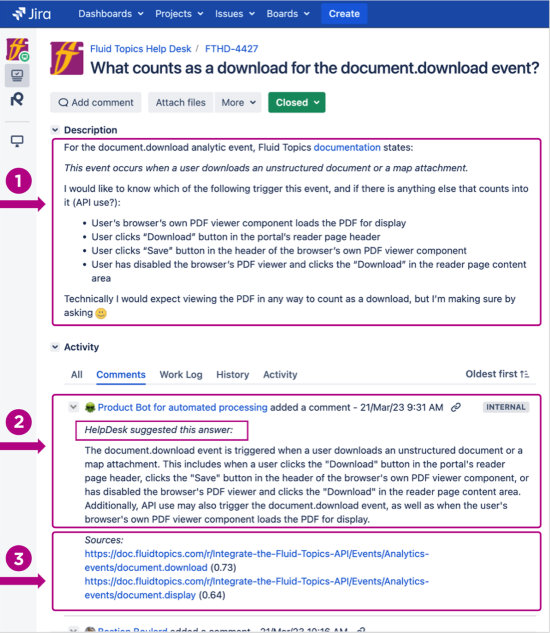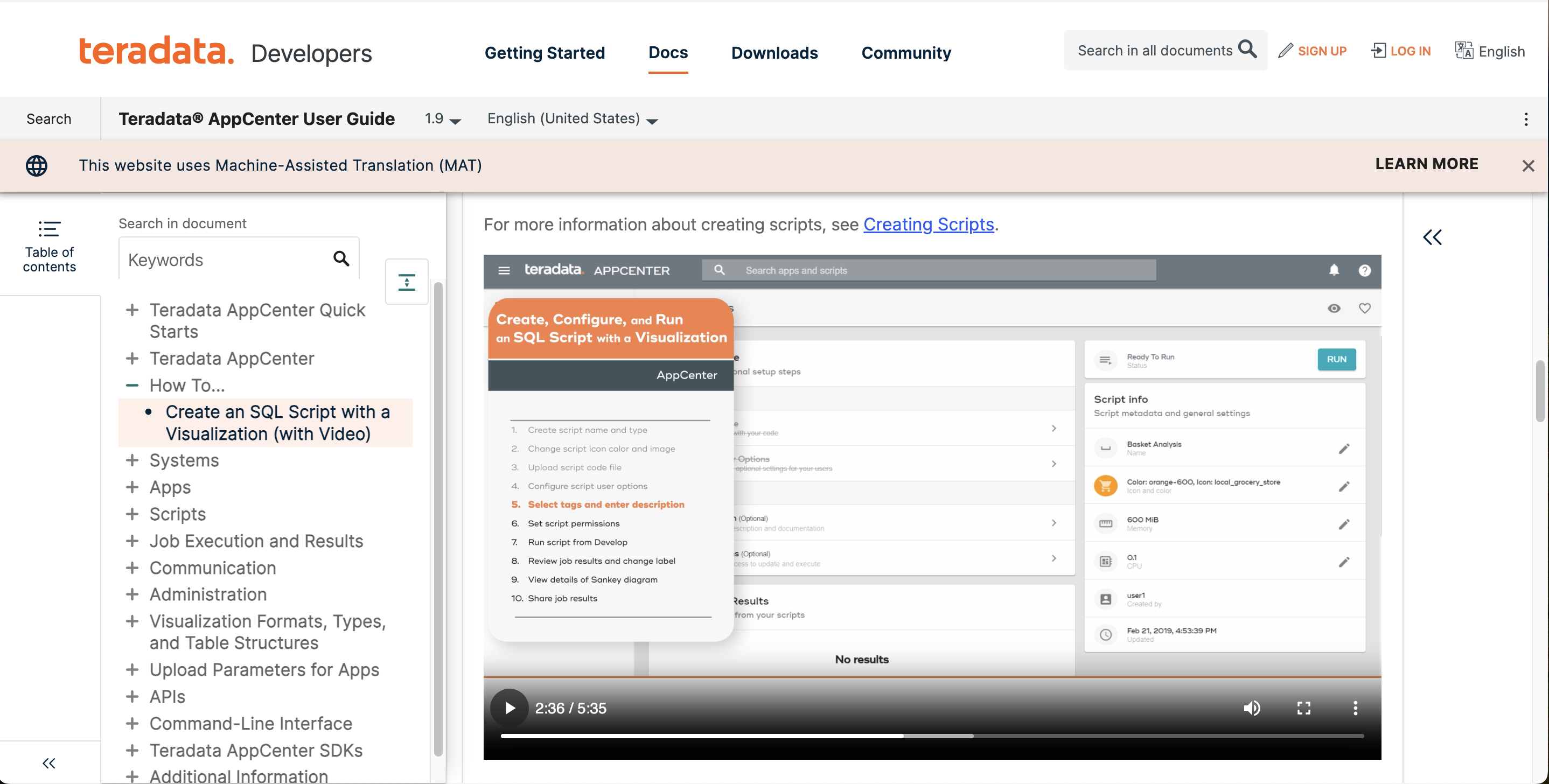What will the 2024 technical documentation trends be? In recent years, the importance of tech doc as an essential component of business has expanded across various industries and it shows no signs of slowing down. According to a Forrester survey, 67% of decision-makers say it is important for their company to deliver a great post-sale customer experience and that includes product and technical documentation.
As we step into 2024, several trends are reshaping the way tech doc is created, delivered, and consumed. With that in mind, we’ve explored 3 key technical documentation trends that are set to redefine the field.
2024 Technical Documentation Trends:
- Increased Adoption of AI
- Content-as-a-Service
- From Text to Rich Media
1. Increased Adoption of AI
This trend won’t come as a surprise! In 2024, AI will undeniably be at the forefront of transformative trends in technical documentation. From AI-powered content creation and automation of repetitive tasks to personalized user experiences and intelligent chatbots, the integration of AI will revolutionize the way tech doc professionals operate.
Generative AI has a great impact on documentation. In fact, applied to the documentation workflow, it can respond to many use cases:
- Changing the authoring process: AI allows more contributors to create texts using prompts. The resulting texts can be utilized as a basis for documentation, requiring subsequent revision or editing by a human writer.
- Monitoring consistency of information across versions, time, and sources: AI can read all versions of your documentation, and all bits of information that your teams have created and detect incoherence and inconsistencies.
- Translating at a lower cost: AI can simplify the publishing workflow and offer on-the-fly translation.
- Information discovery and self-training: AI can autonomously extract concise or different representations from extensive foundational documentation.
- Reinventing the search experience: By properly articulating modern search technology and GenAI, you can build new ways to query and interact.
- Augmented support agents: GenAI will help automate part of the process by providing documentation-based suggested answers, incurring significant savings.
“AI is not about replacing the authors or SME but it’s about helping them do to their work more quickly.”
Amber Swope, Content Specialist, DITA Strategies
Fluid Topics stays current by offering an advanced AI module that brings the content delivery experience to the next level. It includes computation of embeddings, semantic search, support for external LLM providers (with OpenAI, and Azure), prompt configuration and retrieval-augmented generation (RAG).
In this example below, you can see the application of GenAI for customer support with suggested-documented answers.

Embracing these AI-driven advancements in tech documentation is not just a necessity; it’s a strategic move toward creating more efficient, user-centric, and future-ready documentation processes. But let’s be clear. While AI-powered tools can be valuable in a supportive capacity, they cannot replace the expertise of tech doc experts.
2. Content-as-a-Service
Content as a service (CaaS) is not a new concept, but it has recently increased in popularity. The principle of CaaS lies in linking diverse content creation systems or repositories, extracting that content, and delivering it on demand to various endpoints such as corporate websites, documentation portals, chatbots, IoT devices and so on.
In 2024, we expect technical documentation to transition towards a modular and API-driven approach and therefore see the rise in CaaS. Sarah O’Keefe, Chief Executive Officer of Scriptorium Publishing and one of the leading communicators on CaaS puts it this way: “CaaS means that you make your content available via an API and defer formatting and combining until the point of delivery. […] So your rendering, your filtering, your variants,… all this happens after the content is requested by the end web page”.
CaaS has many benefits:
- Creation and delivery are separate from one another. Content creators can work with their favorite tools and don’t have to worry about where and how content will appear,
- CaaS is designed to work with any channel. It ensures that documentation remains up-to-date across all these different channels simultaneously,
- It allows organizations to deliver tailored information to users based on their specific needs and preferences,
- It gives companies the possibility to easily integrate their own system with a wide range of other tools and technologies.
Fluid Topics offers a comprehensive set of features and capabilities to be a key player in the Content as a Service space. A CaaS enabler, our API-driven platform integrates with any content sources and tools and delivers personalized and contextualized content to any channel or device. Tech doc professionals can also update their content as often as they like and make it instantly available to the people who need it.
The CaaS trend presents some amazing possibilities for technical documentation. Are you ready to try it out?
3. From Text to Rich Media
The digital landscape is constantly evolving, and so is the way we communicate information. The era of simple textual documentation is therefore drawing to a close, much to the end-user satisfaction. In recent research, viewers stated that they remembered 95% of a message when delivered by video, but only 10% by text (!).
In 2024, traditional text-based documentation will be complemented by better user experience with videos, GIFs, images and other media formats to enhance engagement and product understanding. Video content will elevate documentation and aid in explaining complex concepts or demonstrate technical steps that cannot easily be described in text.
For companies such as Siemens or Teradata, video plays a crucial role in shaping the customer experience. Let’s take Teradata, one of our customers, as an example. In the following section about their AppCenter User Guide, Teradata has included a video explaining to users how to create an SQL Script with Visualization.

Fluid Topics as the leading Content Delivery Platform allows publishing user-friendly docs in multiple formats – videos, raw images, vector graphics, animation, interactive SVGs, 3D images, audio. Our platform ingests and indexes any type of multimedia file, then optimizes how it’s rendered so that it can be embedded in a document or published as a standalone element for viewing or downloading.
Additionally, we’ve included the capability to:
- load, extract and generate video titles and subtitles,
- translate these subtitles
- produce short video summary
- make the video content searchable with Semantic search or our own search engine Taruqa
Obviously, improvements in media integration are expected to continue evolving. With advancements in technologies such as virtual reality and augmented reality, the potential for media integration in documentation is huge. But as with anything, their usage should be appropriate, fitting the specific case and context.
Is Your Technical Documentation Ready for 2024?
As we embark on the journey into 2024, the future of technical documentation looks promising, driven by trends such as AI, Content-as-a-Service, and rich user experiences.
Today’s businesses face the challenge of providing consistent, value-added content to their audience to stay relevant, competitive, and foster growth. Simply relying on features or pricing is no longer sufficient for maintaining a competitive edge; differentiation requires additional efforts. Leveraging these trends can serve as a secret weapon in addressing these challenges.
Let’s meet back at the end of the year to see how these trends have really evolved!




